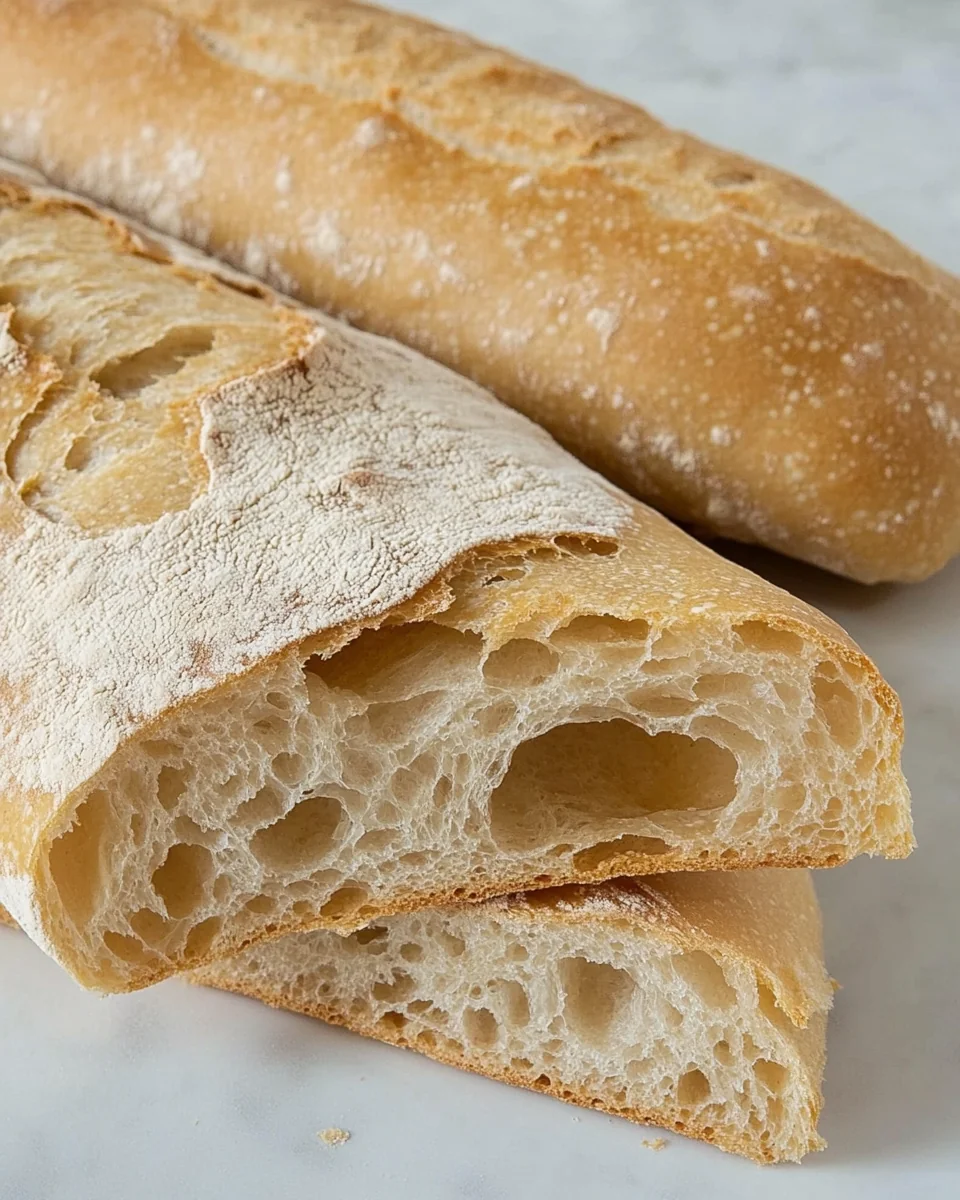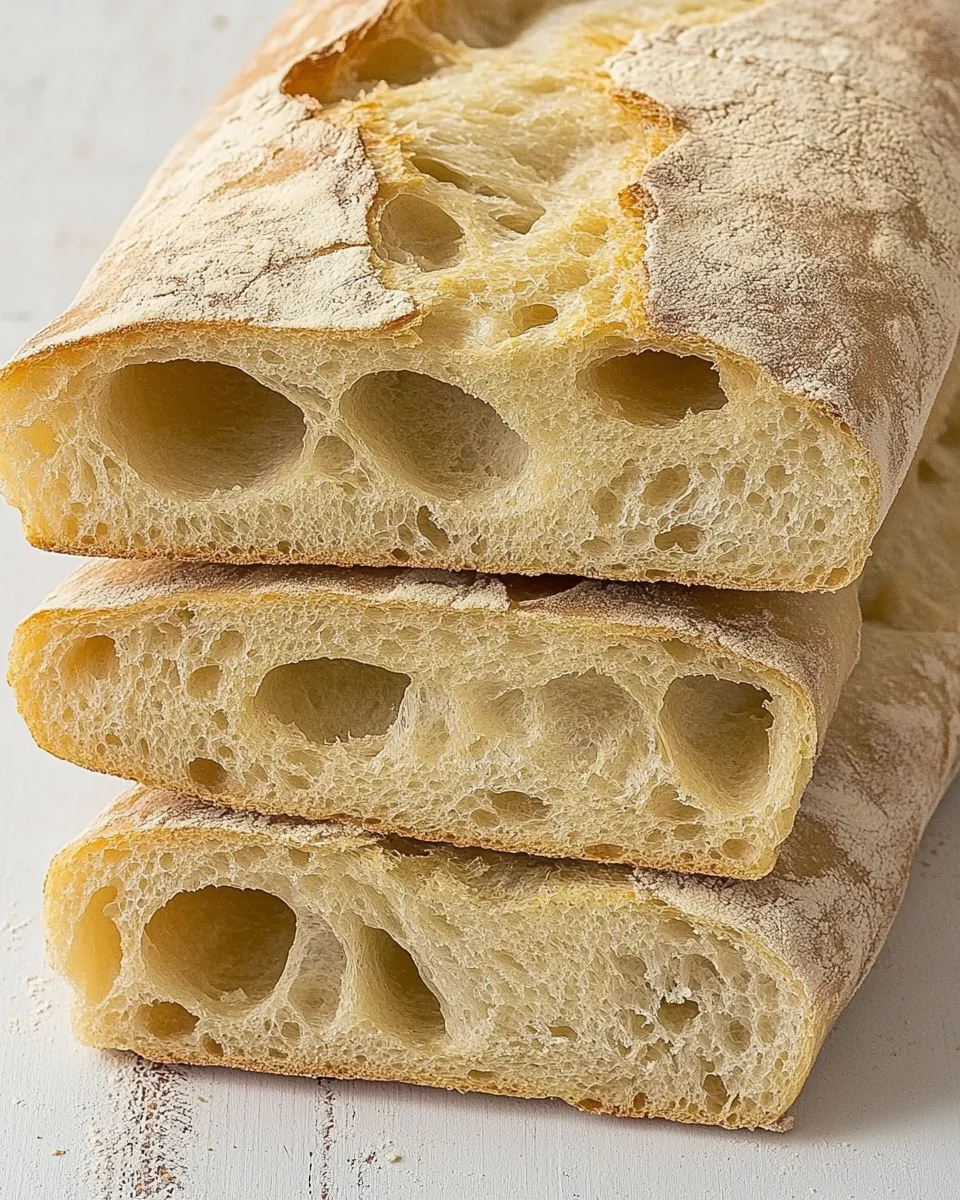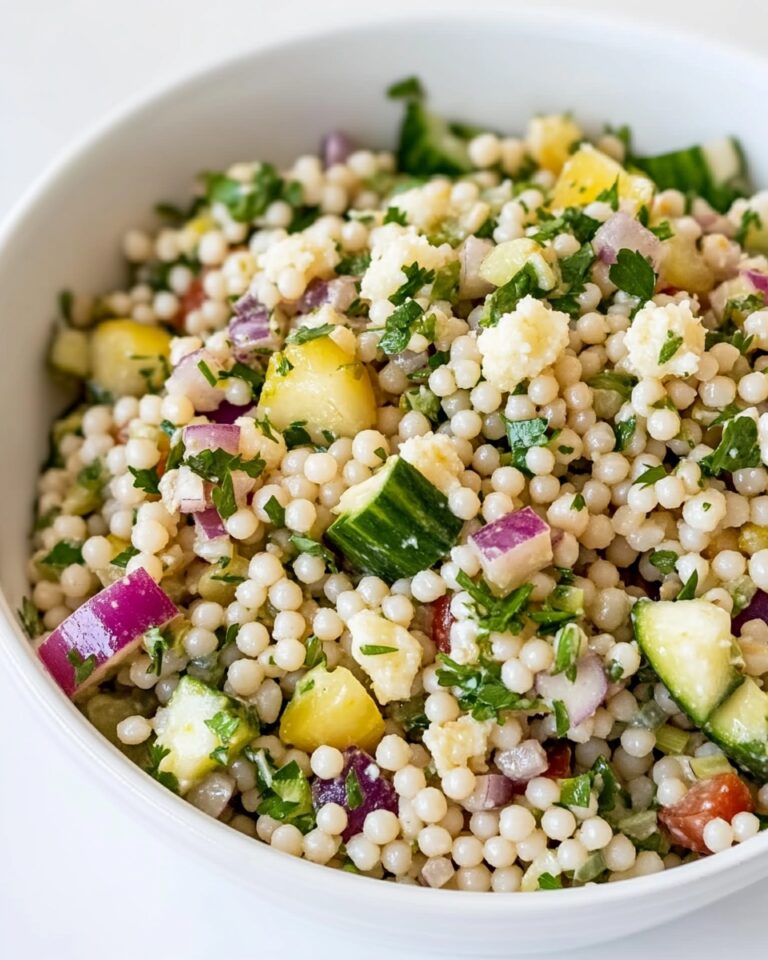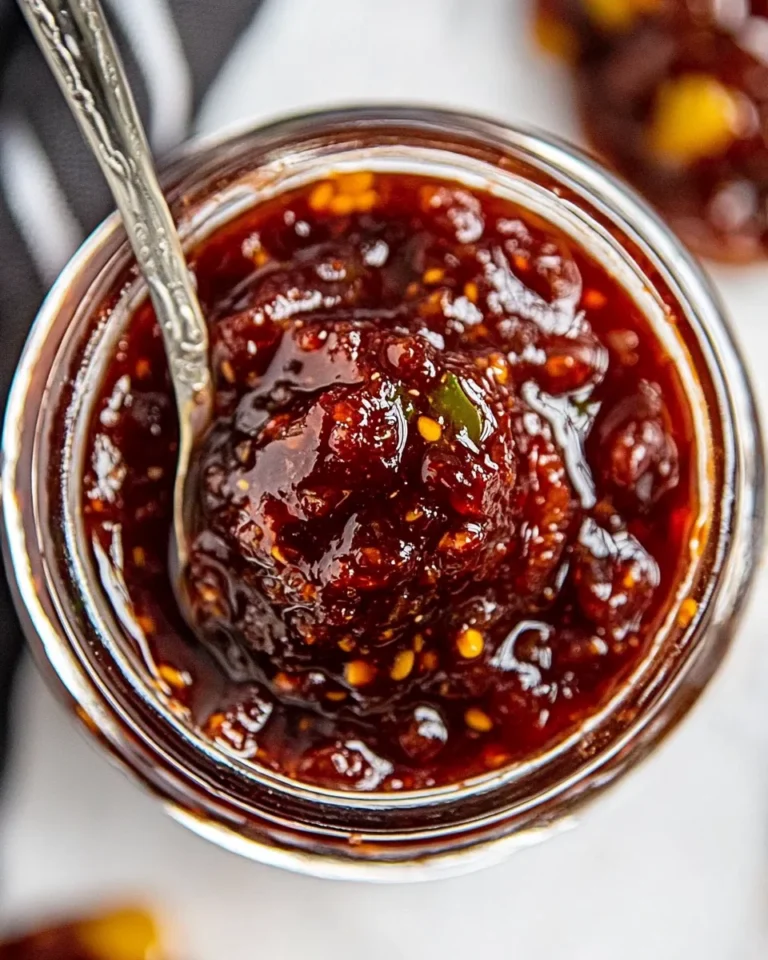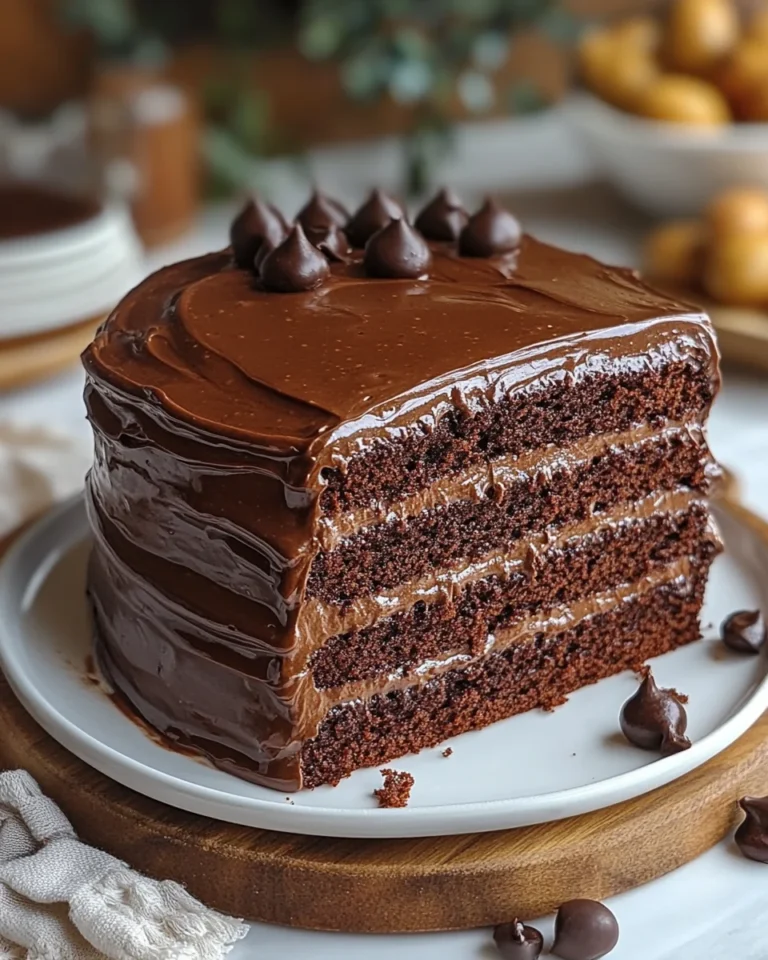Homemade Ciabatta Bread That’s Perfectly Crispy and Light
Homemade Ciabatta Bread That’s Perfectly Crispy and Light is a delightful addition to any meal, known for its airy texture and crisp crust. This Italian classic has a unique flavor that enhances everything from simple soups to gourmet sandwiches, making it a versatile choice for weeknight dinners or family gatherings. With its golden-brown crust and soft, chewy interior, this ciabatta bread is sure to impress your guests and elevate any dining experience. Whether you are hosting a dinner party or enjoying a casual lunch, this bread is the perfect companion, delivering a satisfying crunch alongside a light, fluffy bite.
Why You’ll Love This Recipe?
This Homemade Ciabatta Bread That’s Perfectly Crispy and Light recipe stands out for several reasons. Firstly, the flavor is simply irresistible. The bread has a slightly nutty and toasty taste, thanks to the high-quality flour and the fermentation process, which develops a depth of flavor that store-bought bread can’t match. Secondly, the ease of preparation is remarkable. While it does require some time for rising, the actual hands-on effort is minimal, making it accessible for bakers of all skill levels. You can effortlessly incorporate this recipe into your routine without feeling overwhelmed. Lastly, the texture is a game-changer. The combination of a perfectly crispy crust and a light, airy crumb creates a contrast that is both enjoyable and satisfying. This ciabatta bread serves as an excellent base for bruschetta, sandwiches, or even as a side to your favorite pasta dish.
Ingredients to make The recipe :
To create the perfect Homemade Ciabatta Bread That’s Perfectly Crispy and Light, you will need the following ingredients:
- All-Purpose Flour: This is the backbone of your ciabatta. Approximately 4 cups is required, giving the bread its structure. All-purpose flour has a balanced protein content that helps achieve the desired chewiness while still allowing the bread to rise beautifully.
- Water: You will need about 1 and 3/4 cups of lukewarm water. The hydration level in the dough is crucial for achieving the light and airy texture characteristic of ciabatta. Warm water helps activate the yeast, ensuring a good rise.
- Active Dry Yeast: One packet, or about 2 and 1/4 teaspoons, is needed to leaven the bread. This ingredient is essential as it ferments the sugars in the dough, producing carbon dioxide that causes the bread to rise.
- Salt: Two teaspoons of salt are necessary for flavor enhancement. Salt not only seasons the bread but also strengthens the gluten structure, improving texture.
- Olive Oil: About 2 tablespoons of olive oil adds richness to the dough, contributing to a soft interior and enhancing the flavor. It also helps in achieving a golden crust.
How to Make Homemade Ciabatta Bread That’s Perfectly Crispy and Light ?
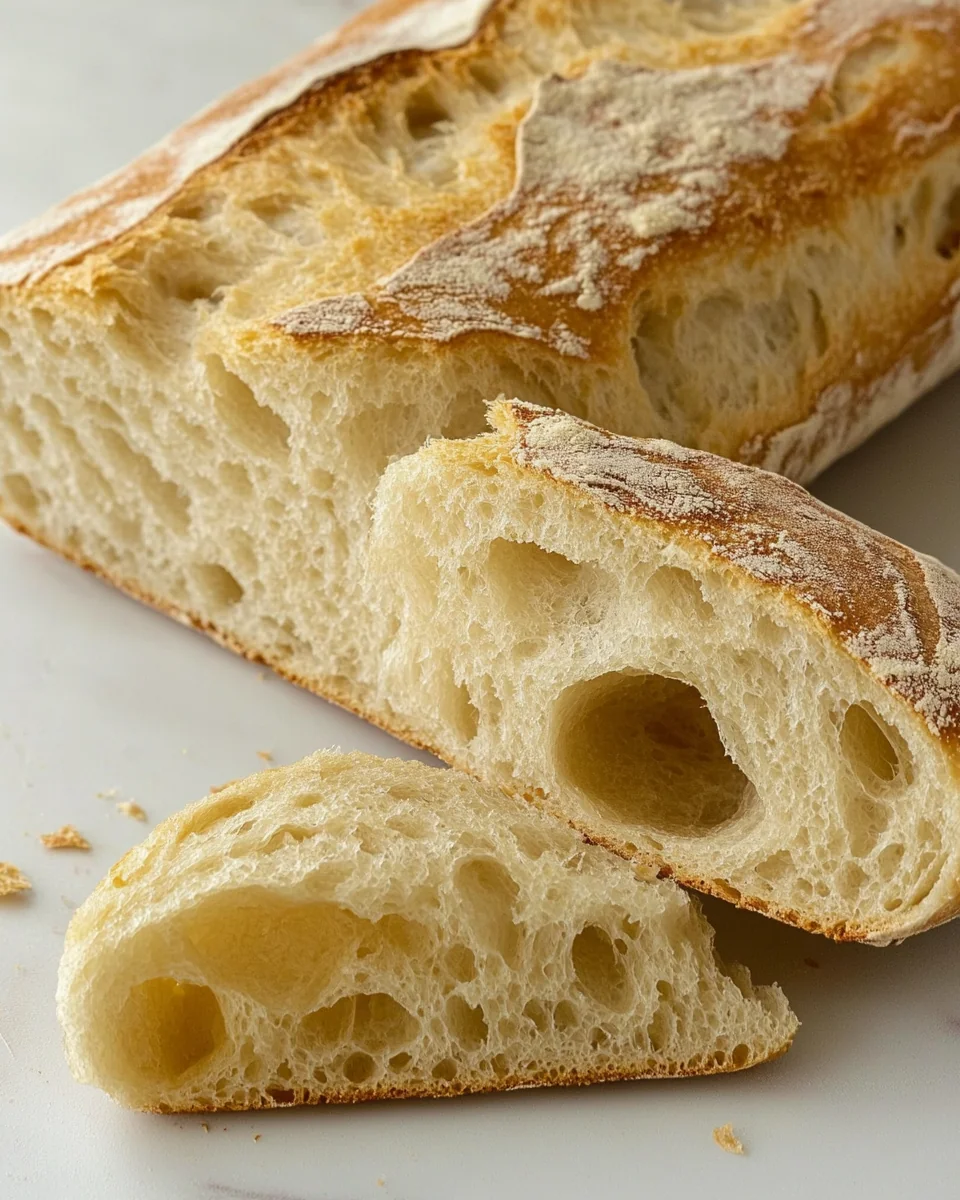
To make Homemade Ciabatta Bread That’s Perfectly Crispy and Light, follow these detailed steps to ensure success:
- Begin by combining the active dry yeast and lukewarm water in a large mixing bowl. Allow it to sit for about 5-10 minutes until it becomes frothy, indicating that the yeast is active.
- Next, gradually add the all-purpose flour and salt to the mixture. Stir with a wooden spoon or spatula until a shaggy dough forms. This initial mixing phase is crucial for incorporating the ingredients without overworking the dough.
- Once combined, add the olive oil to the dough. Mix until it is fully absorbed. The oil will help improve the dough’s elasticity and flavor.
- Cover the bowl with a clean kitchen towel or plastic wrap and let the dough rise at room temperature for about 1-2 hours, or until it has doubled in size. Look for a puffy appearance; this is a sign that the fermentation process is working.
- After the first rise, gently turn the dough out onto a well-floured surface. Be careful not to deflate the dough too much. Using floured hands, stretch the dough into a rectangle approximately 1 inch thick.
- Fold the dough into thirds like a letter, then turn it 90 degrees and stretch it out again. This folding technique helps develop gluten, which contributes to the chewy texture of the bread.
- Place the folded dough back into the bowl, cover it, and let it rise for another 30-60 minutes. You should notice it puffing up once more.
- Preheat your oven to 450°F (232°C). Place a baking stone or an inverted baking sheet inside to heat up as well. This will ensure a crispy bottom crust.
- Once the dough has risen, carefully transfer it to a parchment-lined baking sheet. Use a sharp knife or a lame to score the top of the loaf, allowing steam to escape during baking.
- Before placing the dough in the oven, create steam by placing a shallow pan filled with water on the bottom rack. This will help achieve a crispy crust.
- Bake the dough for 25-30 minutes or until it turns a deep golden brown. The internal temperature should reach about 200°F (93°C). Listen for a hollow sound when tapping the bottom of the loaf, indicating it is fully baked.
- Once baked, remove the ciabatta from the oven and let it cool on a wire rack. This cooling period allows the crust to firm up further while the interior remains soft and airy.
Tips for Variations:
To enhance your Homemade Ciabatta Bread That’s Perfectly Crispy and Light, consider these creative variations:
- For a herbed version, add 1-2 tablespoons of dried Italian herbs like oregano or basil directly into the flour mixture. This infusion will give the bread a fragrant, aromatic quality.
- Incorporate roasted garlic by mixing in 2-3 cloves of mashed roasted garlic into the dough. This addition adds a savory depth and pairs beautifully with olive oil.
- If you prefer a sweeter option, consider adding 1 tablespoon of honey or sugar to the yeast mixture. This will create a subtle sweetness that works well for breakfast or brunch.
- For a nutty flavor, mix in 1/2 cup of chopped walnuts or sunflower seeds. These ingredients provide a delightful crunch and additional texture to the ciabatta.
- Experiment with different types of flour, such as whole wheat or spelt flour, for a more rustic flavor. Just be aware that these may require adjustments in hydration levels.
Serving Suggestions:
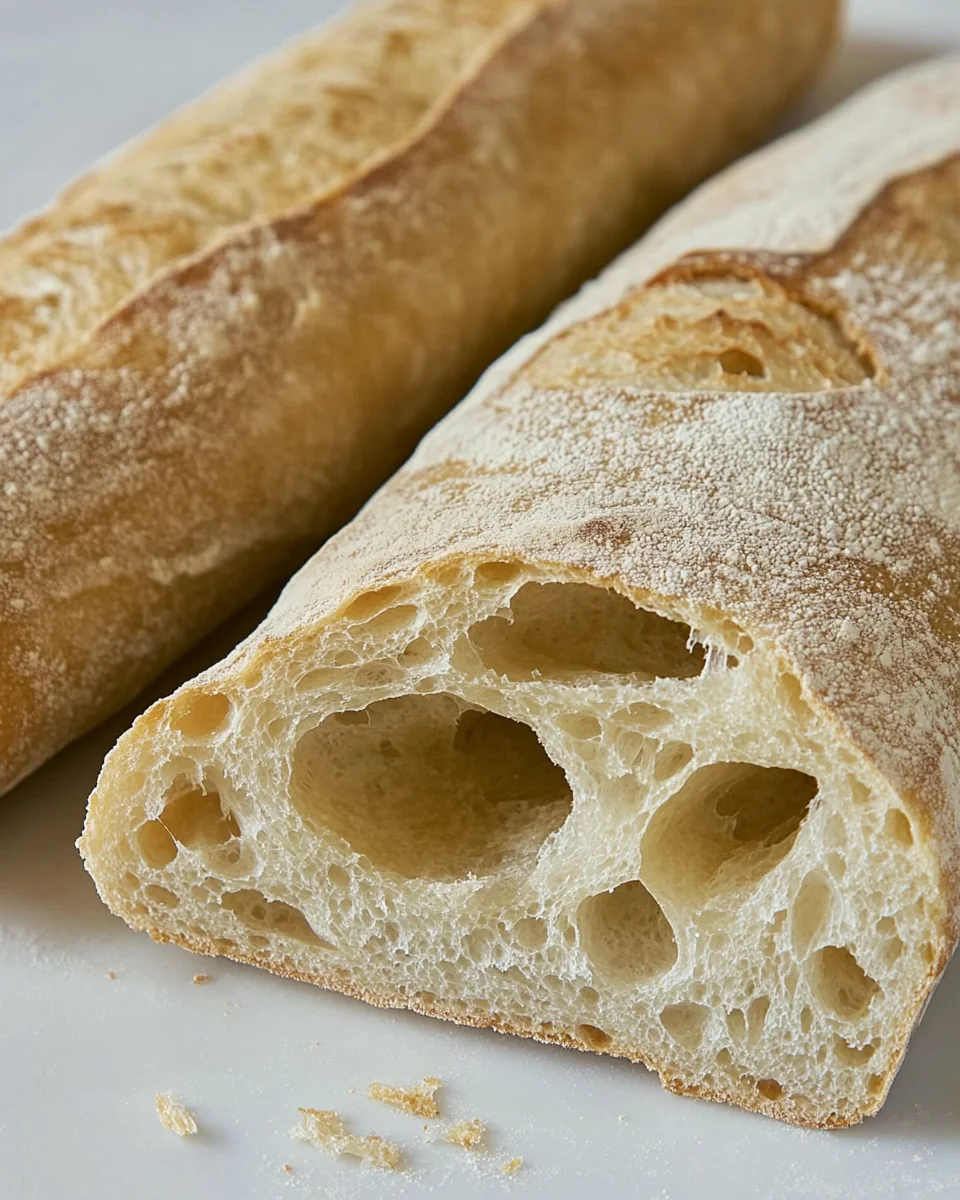
When it comes to serving your Homemade Ciabatta Bread That’s Perfectly Crispy and Light, the possibilities are endless:
- Pair the bread with a variety of dips like hummus or tzatziki for a delightful appetizer during gatherings or parties.
- Slice the ciabatta to create delectable sandwiches filled with fresh vegetables, grilled chicken, or your favorite spreads, perfect for lunch or picnics.
- Enjoy it alongside hearty soups or stews, allowing the crust to soak up the delicious broth.
- For a festive touch, serve it as part of a cheese platter, accompanied by olives and cured fruits during special occasions like Ramadan or family dinners.
- To store leftovers, wrap the ciabatta in parchment paper and place it in a bread bag at room temperature. This method retains its crispy exterior while keeping the interior soft.
FAQ:
How do I store leftovers?
To store any leftover Homemade Ciabatta Bread That’s Perfectly Crispy and Light, wrap it in parchment paper and place it in a bread bag. This allows the bread to breathe while maintaining its crustiness. Avoid plastic wraps, as they can make the crust soggy.
Can I freeze this recipe?
Yes, you can freeze Homemade Ciabatta Bread That’s Perfectly Crispy and Light. Once cooled completely, wrap the bread tightly in plastic wrap and then in aluminum foil to prevent freezer burn. It can be frozen for up to three months. Thaw at room temperature before enjoying.
Can I use whole wheat flour for this recipe?
You can use whole wheat flour, but it may require adjustments to the hydration level due to its higher fiber content. Start with a mix of all-purpose and whole wheat flour for the best results while maintaining lightness.
What can I do if my ciabatta dough is too sticky?
If your dough is too sticky, avoid adding too much flour. Instead, use wet hands to handle the dough. A slightly sticky dough is normal for ciabatta and contributes to its airy texture.
What is the best way to enjoy ciabatta bread?
The best way to enjoy Homemade Ciabatta Bread That’s Perfectly Crispy and Light is to slice it fresh and serve it warm with olive oil and balsamic vinegar for dipping. It also pairs wonderfully with soups, salads, or as a sandwich base.
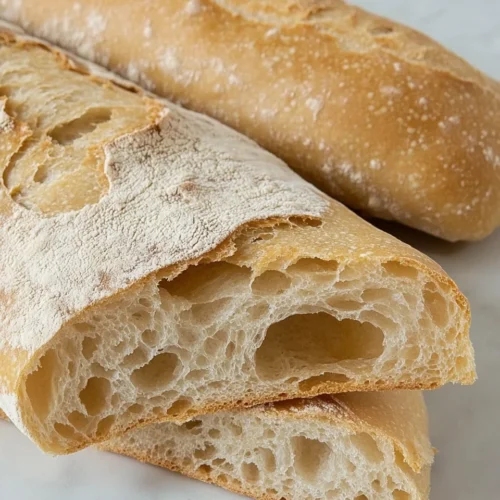
Homemade Ciabatta Bread That's Perfectly Crispy and Light
Equipment
- Mixing Bowl
- Baking Sheet
- Parchment Paper
- Wire Rack
Ingredients
Dry Ingredients
- 4 cups All-Purpose Flour Provides structure and chewiness.
- 2.25 teaspoons Active Dry Yeast Leavens the bread.
- 2 teaspoons Salt Enhances flavor and strengthens gluten.
Wet Ingredients
- 1.75 cups Lukewarm Water Activates the yeast.
- 2 tablespoons Olive Oil Adds richness and helps with crust.
Instructions
- Combine the active dry yeast and lukewarm water in a large mixing bowl. Let it sit for 5-10 minutes until frothy.
- Gradually add the all-purpose flour and salt to the mixture. Stir until a shaggy dough forms.
- Add the olive oil and mix until fully absorbed.
- Cover the bowl and let the dough rise for 1-2 hours until doubled in size.
- Turn the dough out onto a floured surface and stretch into a rectangle about 1 inch thick.
- Fold the dough into thirds like a letter, turn 90 degrees, and stretch again.
- Place the folded dough back in the bowl, cover, and let rise for another 30-60 minutes.
- Preheat the oven to 450°F (232°C) with a baking stone or inverted baking sheet inside.
- Transfer the dough to a parchment-lined baking sheet and score the top.
- Place a shallow pan with water on the bottom rack to create steam.
- Bake for 25-30 minutes until golden brown and the internal temperature reaches 200°F (93°C).
- Cool on a wire rack before slicing.

